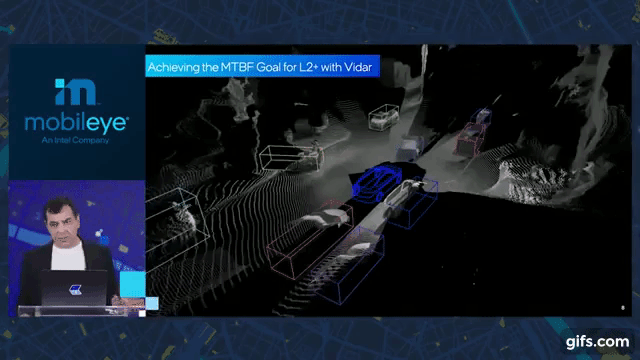diplomat33
Average guy who loves autonomous vehicles
Harman, a software company owned by Samsung says they are focused on making ADAS features more personalized to the owner.
"There are many people who say that lane-keeping assist is a great feature, it keeps them in their lane if they’re not 100% attentive, but there are many others who say that they don’t like it. It reacts in a way that they don’t understand. To get these people motivated, personalization is key. This, for me, will be the major breakthrough. Identifying who is behind the steering wheel, and providing personalized application of the different features via the cloud,” explained Bernhard Pirkl, Harman’s vice president of ADAS, in an interview with Digital Trends."
He believes full autonomy is still in the future:
"Harman, like a majority of its peers and rivals, doesn’t believe full autonomy is around the corner. Pirkl explained that technology developed in the last decade can drive a car better than a human. It can steer, brake, accelerate, and change gears more smoothly and with more accuracy. What these systems struggle with is the unexpected.
“Observing a situation, understanding the context, and predicting what will happen in the next five, 10, or 15 seconds is the key challenge,” he explained. Technology like lidar and 5G can help engineers overcome this hurdle."
He sees a benefit in V2V technology to make autonomy even safer:
"you approach an intersection and notice that the light is green so you keep your foot down without thinking twice. Meanwhile, a car traveling on the road perpendicular to yours can’t stop for its red light due to a brake problem. Your self-driving car might not see the runaway vehicle if there are signs, trucks, or buildings at the corner of the intersection, and it would be caught off-guard. It might avoid the collision, but it almost certainly wouldn’t be smooth. Adding 5G-enabled vehicle-to-vehicle communication technology to this scenario would allow the runaway car to tell others around it, including yours, “watch out, I can’t stop, please slow down.” Teaching cars to talk promises to make autonomy much safer."
Ultimately, he sees autonomy coming first to robotaxis and geofenced applications that are simpler. He thinks full autonomy on consumer cars will take longer:
"“What we see is that the focus has shifted more towards people-movers in operational design domains, so in dedicated environments like airports and university campuses, things like that. Or, towards commercial vehicles, where there is much less vehicle dynamics. The situations are far less complex. Autonomy will first come via these business areas, but for privately-owned cars it will take much longer than expected,” summed up Pirkl."
Harman Working on Personalizing Electronic Driving Aids | Digital Trends
"There are many people who say that lane-keeping assist is a great feature, it keeps them in their lane if they’re not 100% attentive, but there are many others who say that they don’t like it. It reacts in a way that they don’t understand. To get these people motivated, personalization is key. This, for me, will be the major breakthrough. Identifying who is behind the steering wheel, and providing personalized application of the different features via the cloud,” explained Bernhard Pirkl, Harman’s vice president of ADAS, in an interview with Digital Trends."
He believes full autonomy is still in the future:
"Harman, like a majority of its peers and rivals, doesn’t believe full autonomy is around the corner. Pirkl explained that technology developed in the last decade can drive a car better than a human. It can steer, brake, accelerate, and change gears more smoothly and with more accuracy. What these systems struggle with is the unexpected.
“Observing a situation, understanding the context, and predicting what will happen in the next five, 10, or 15 seconds is the key challenge,” he explained. Technology like lidar and 5G can help engineers overcome this hurdle."
He sees a benefit in V2V technology to make autonomy even safer:
"you approach an intersection and notice that the light is green so you keep your foot down without thinking twice. Meanwhile, a car traveling on the road perpendicular to yours can’t stop for its red light due to a brake problem. Your self-driving car might not see the runaway vehicle if there are signs, trucks, or buildings at the corner of the intersection, and it would be caught off-guard. It might avoid the collision, but it almost certainly wouldn’t be smooth. Adding 5G-enabled vehicle-to-vehicle communication technology to this scenario would allow the runaway car to tell others around it, including yours, “watch out, I can’t stop, please slow down.” Teaching cars to talk promises to make autonomy much safer."
Ultimately, he sees autonomy coming first to robotaxis and geofenced applications that are simpler. He thinks full autonomy on consumer cars will take longer:
"“What we see is that the focus has shifted more towards people-movers in operational design domains, so in dedicated environments like airports and university campuses, things like that. Or, towards commercial vehicles, where there is much less vehicle dynamics. The situations are far less complex. Autonomy will first come via these business areas, but for privately-owned cars it will take much longer than expected,” summed up Pirkl."
Harman Working on Personalizing Electronic Driving Aids | Digital Trends



